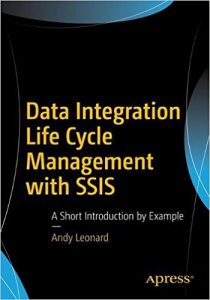![]() Software development is hard. It takes time, yes. But more than that, software development takes patience and thought and blood and sweat and love and tears.
Software development is hard. It takes time, yes. But more than that, software development takes patience and thought and blood and sweat and love and tears.
My friends at Varigence recently released an update to their Business Intelligence Markup Language (Biml) products. If you’re into business intelligence or data science, integration, or engineering, you should check out Biml.
The release took longer than some would have liked.
Varigence didn’t provide regular updates on progress.
Some became… antsy.
I understand. Really, I do. As a BimlHero I get just a little more access behind the curtain compared to the average bear. Would I like to know more? Yep. Does it bother me when I don’t hear more? Nope. Why?

Software Development is Hard
I know how difficult it is to develop software because I decided back in the early 20-teens that I wanted to develop some software. (And I did it! Check out DILM Suite!) In the early 20-teens, I encountered… resistance… to the idea. Make no mistake, the resistance was well-founded and may ultimately prove to have been correct. But resistance didn’t do anything to curb my beliefs that:
- Software should always participate in a lifecycle that is managed, preferably by a process akin to DevOps;
- All software is tested. Some intentionally; and
- SSIS development is software development.
SSIS Rocks
The SSIS team at Microsoft has given us some incredible out-of-the-box functionality. I love the SSIS Catalog! It’s a great enterprise framework for managing data engineering execution, logging, and externalization (configuration). I believe that strongly-enough to have included similar statements in my last book: Data Integration Life Cycle Management with SSIS:
I can hear you thinking, “If you’re convinced the SSIS Catalog is so awesome, Andy, why did you build DILM Suite?” That’s a fair question. I actually answer this question in the book in chapter 6 titled Catalog Browser. You don’t have to buy the book to learn my answer; I published Chapter 6 here on this blog in a post with the obscure title, Why I Built DILM Suite, by Andy Leonard.
Was I Right?
I don’t know.
Time will tell.
There have been thousands of downloads since I built DILM Suite. I view the number of downloads as indicative of interest. Does everyone who downloads a product – especially a free product – use that product? Goodness no. Does everyone who uses SSIS or the SSIS Catalog need to download DILM Suite components? Goodness no.
If you’re trying to practice lifecycle management (or DevOps) with SSIS, though, DILM Suite can help.
100 Dumb Little Things
Software development is a lot like being a parent in that it consists of getting 100 dumb little things right. Are the dumb little things important? Some are, some are not, and some are vital. Does anyone get all 100 dumb little things right in parenting? in software development? No and no.
At the end of the day, every day in fact, I am extremely proud of what I’ve built.
SSIS Catalog Compare is the first product I’ve ever attempted to develop. Perhaps that shows. My competition certainly thinks so and has made much hay out of this fact. Do I shy away from telling folks because my competition uses it against me?
Nope. At the end of the day, every day in fact, I am extremely proud of what I’ve built. I get regular feedback from customers sharing how much the product helps them manage SSIS in their enterprise. The feedback greatly overshadows the… statements… of the competition. (Sidebar: I sometimes wonder how my competition sleeps at night…)
Getting software right is all about getting everything right including the best wording for feedback and error messages (like that shown at the top of this post).
Getting everything right is almost impossible, and certainly cost-prohibitive, but it should absolutely be the goal of any software development endeavor.
Getting 100 dumb little things right is my goal.
Peace.


Comments